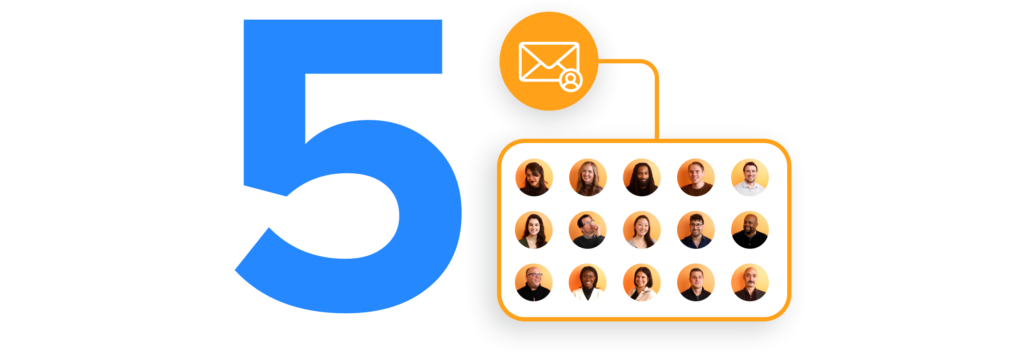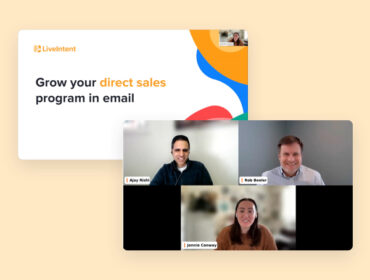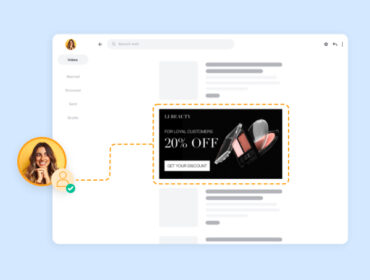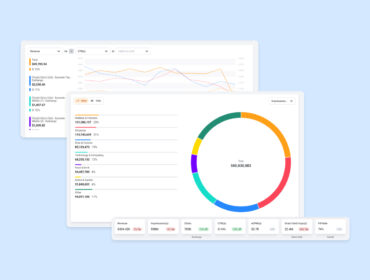5 tips for email audience building

Publishers are increasingly investing in email to build engaged audiences and nurture subscriber relationships. After all, email offers access to logged-in users, deterministic IDs, privacy-safe ad environments, and first-party data.
Also, it’s personal.
“It’s really about creating that connection,” says Ryan Kellett, Axios VP of Audience, in a recent Real Time Banter webinar. “[Your email] is in someone’s inbox next to the note from their mom and their bank statement. Everyone has email; it’s a very foundational piece of technology.”
Kellett would know. As an email-driven publisher, Axios runs over 30 unique newsletters like Axios Latino, Axios Crypto, Axios Sports, and Axios Science — and they’re just getting started.
“Newsletters are really critical to a lot of publications right now; you see the demand skyrocketing,” Kellett says. “You can have full products that are meant to be consumed in the inbox. You can have products that are link-driven directed toward web traffic.”
To help publishers harness the power of email for themselves, we’ll break down Kellett’s top tips for audience building in today’s digital world.
1. Identify your target reader
Publishers need to start by pinpointing their target audience.
As Kellett says, “You can have all the fancy tactics in the world, but if you don’t really understand who you’re trying to reach, it doesn’t matter.”
Axios identified its audience as smart professionals: people who are engaged in their work life and curious about the world. And every new email offering is built with those users in mind.
“How can you remain laser-focused on your audience and serve their needs above others?” Kellett says. “That clarity, that focus, can really go a long way.”
2. Understand their values
Once you know who your audience is, you can better understand their specific values, interests, and needs.
Axios, for example, realized many smart professionals were interested in community connections and leadership. So the publisher launched Axios Local, an email newsletter that will deliver community-related content across 25 cities.
“We are continuing to expand what the definition [of smart professional] is,” Kellett says. “And we’re thinking about how to serve that really focused audience — not just everyone out there.”
3. Sync with their daily habits
Digital content can play an important part in people’s daily routines. Maybe readers check their phone right when they wake up every morning. Or they shop online on their desktop during each lunch break.
It’s the publisher’s job to know these habits and build content that fits into them. That’s why Axios launched its AM/PM newsletter to reach daily readers when they wake up and before they go to bed.
“The smartest people out there are thinking about building habits and driving readers to be more engaged by adopting either a daily habit or a weekly habit of some kind,” Kellett says. “You have to try and help them understand the value that you provide.”
4. Gather qualitative and quantitative data
The best way to track and meet changing consumer habits is to gather data directly from your audiences.
“Data is incredibly important to an audience development person — whether you’re in editorial or not,” Kellett says. “Data practices are really at the foundation of that.”
Axios, for example, doesn’t just rely on quantitative metrics like email open rate and clickthrough rate. They also gather qualitative data through email surveys and direct replies from newsletter readers. And, of course, the more email newsletters you run, the more data you can continuously collect about your readers’ experiences.
“It helps to have a lot of different newsletters in this case; they cover a lot of different topics,” Kellett says. “When you have the same email address, you can say, ‘OK, this person is reading across a variety of verticals,’ or ‘There’s really only one.'”
5. Adapt and evolve to drive revenue
Many publishers run free email newsletters to start gaining subscribers and growing their audience. Once you develop that readership base, however, you can take your operation to the next level and try launching paid offerings to help increase revenue.
Axios, for instance, began delivering mostly free newsletters. But in 2022, they launched Axios Pro, a paid newsletter of hyper-relevant content and analysis across five industries: fintech, health, retail, climate, and media.
“Axios is lucky to have built some very large email lists and subscribers for our free products, and Axios Pro will represent an evolution of that,” Kellett says. “If you’re really successful in your newsletter and you’re really feeling not only your metrics, but you also see that engagement and feedback […] you can advance a little further by launching a subscription product.”


